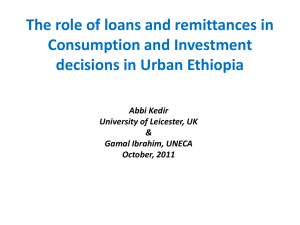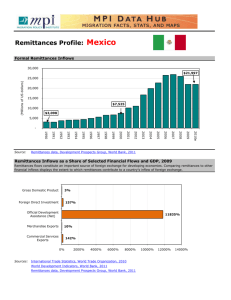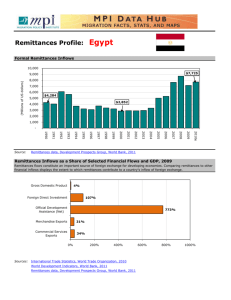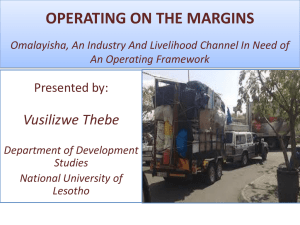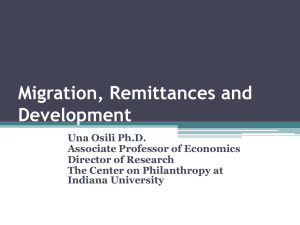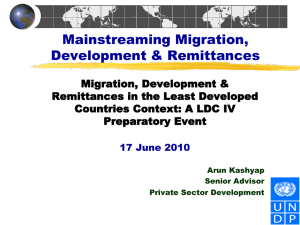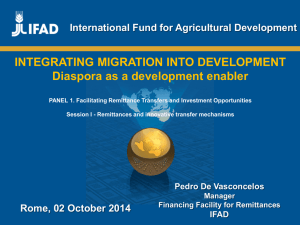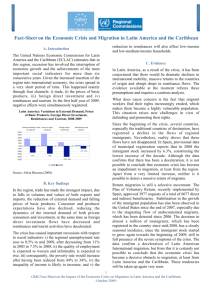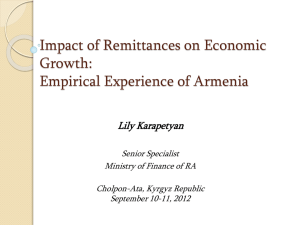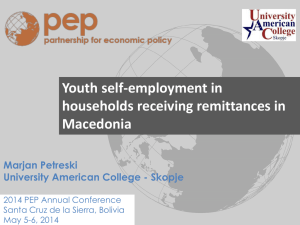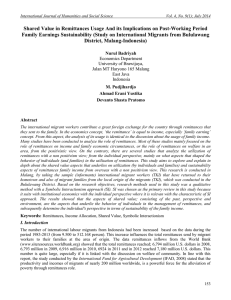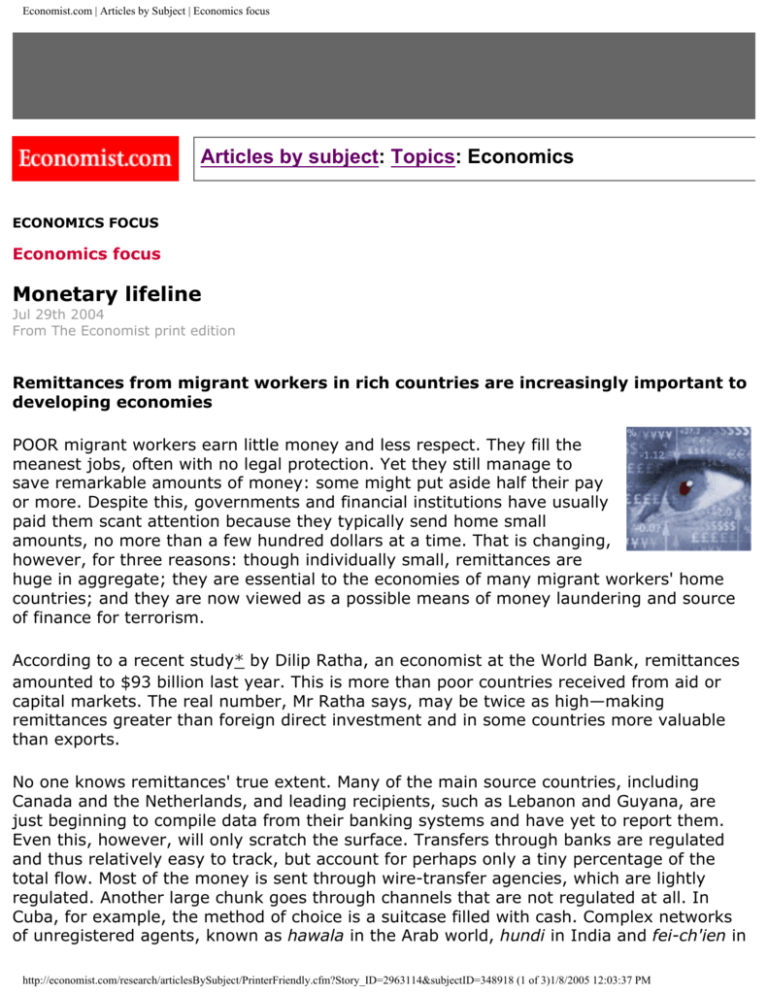
Economist.com | Articles by Subject | Economics focus
Articles by subject: Topics: Economics
ECONOMICS FOCUS
Economics focus
Monetary lifeline
Jul 29th 2004
From The Economist print edition
Remittances from migrant workers in rich countries are increasingly important to
developing economies
POOR migrant workers earn little money and less respect. They fill the
meanest jobs, often with no legal protection. Yet they still manage to
save remarkable amounts of money: some might put aside half their pay
or more. Despite this, governments and financial institutions have usually
paid them scant attention because they typically send home small
amounts, no more than a few hundred dollars at a time. That is changing,
however, for three reasons: though individually small, remittances are
huge in aggregate; they are essential to the economies of many migrant workers' home
countries; and they are now viewed as a possible means of money laundering and source
of finance for terrorism.
According to a recent study* by Dilip Ratha, an economist at the World Bank, remittances
amounted to $93 billion last year. This is more than poor countries received from aid or
capital markets. The real number, Mr Ratha says, may be twice as high—making
remittances greater than foreign direct investment and in some countries more valuable
than exports.
No one knows remittances' true extent. Many of the main source countries, including
Canada and the Netherlands, and leading recipients, such as Lebanon and Guyana, are
just beginning to compile data from their banking systems and have yet to report them.
Even this, however, will only scratch the surface. Transfers through banks are regulated
and thus relatively easy to track, but account for perhaps only a tiny percentage of the
total flow. Most of the money is sent through wire-transfer agencies, which are lightly
regulated. Another large chunk goes through channels that are not regulated at all. In
Cuba, for example, the method of choice is a suitcase filled with cash. Complex networks
of unregistered agents, known as hawala in the Arab world, hundi in India and fei-ch'ien in
http://economist.com/research/articlesBySubject/PrinterFriendly.cfm?Story_ID=2963114&subjectID=348918 (1 of 3)1/8/2005 12:03:37 PM
Economist.com | Articles by Subject | Economics focus
China, leave no trace.
What is plain, however, is the importance to several countries of emigrants' remittances.
These payments provide more than a quarter of GDP for Jordan, Lesotho, Nicaragua, Haiti
and Tonga, and more than 5% for many others. In 36 countries, remittances exceed all
other imports of capital combined, public and private. Recent research ties rising
remittances directly to increasing GDP and reducing poverty. Another study finds a
positive link between remittances and the probability that children stay in school. At this
year's G8 summit, rich-world politicians noted the importance of remittances in financing
small businesses, education and housing in recipient countries. As a source of finance,
remittances have several advantages. Unlike development loans, they do not come with a
liability or an obligation to pay interest. They are sent directly to the people for whom they
are intended and thus cannot be squandered by governments. They are a more stable
funding source than foreign direct investment (and even more stable than portfolio flows).
Go with the flow
Seeing the importance of remittances, governments in receiving countries have been
encouraging them. India, the largest recipient, abolished taxes on remittances several
years ago. Colombia followed in January. Mexico, the second-largest, has made sending
money home far easier for its many citizens working in America by issuing an identification
card that even illegal immigrants can use to open an American bank account. Brazil and
Guatemala will soon introduce similar cards.
Scenting an opportunity, companies from banks to Wal-Mart have been entering the
business of providing the means of sending money home. As a result, many migrants have
seen the cost of remittances fall by half in the past five years. Yet charges remain painful.
According to a study by the Pew Hispanic Centre, which chronicles Latinos' experiences in
America, the cost of sending money to Mexico, a market where competition and efficiency
are relatively high, is still 4% of the sum sent. Transfers to Venezuela and Cuba cost three
times as much. Much of the cost—such as a poor exchange rate—is often hidden from
customers.
Still, a steady and rising source of money has prompted many large banks to look beyond
transfers for further opportunities in serving migrants and those to whom they send
money. Once the money arrives, it theoretically could become a deposit, and that, in turn,
could provide the basis for more sophisticated products. That ought to assist the
development of modern financial markets, and improve the allocation of capital.
Despite their virtues, remittances can also be a source of trouble. How much trouble, no
one can tell. Because it is hard to know the size of the flows, it is hard to be sure that the
mass of tiny transactions are not being used to launder money or finance terrorism.
Applying know-your-customer rules to millions of tiny transactions is plainly impossible.
Trying to stop suspicious flows can be costly to recipient economies: recent efforts by
Saudi Arabia (after America, the largest source of remittances) to crack down on the
http://economist.com/research/articlesBySubject/PrinterFriendly.cfm?Story_ID=2963114&subjectID=348918 (2 of 3)1/8/2005 12:03:37 PM
Economist.com | Articles by Subject | Economics focus
financing of terrorism have had a discernible effect on money being sent back to the
Philippines.
There may also be economic costs associated with reliance on remittances. Like any
unearned wealth, they may foster idleness among those who benefit. They might result in
what economists call “Dutch disease”, pushing up the value of a nation's currency. Some
also worry that remittances are earned not only by poor migrants but by a country's most
productive or essential workers—engineers and doctors, say—who supposedly could be
doing more good at home. But that, surely, is their choice. And if they can earn more
abroad, then they are not the only ones that gain: so do their hosts and the people back
home, thanks to the funds sent from a wealthy foreign land.
* Mr Ratha's paper, "Workers' Remittances: An Important and Stable Source of External Development
Finance" can be found here. The reported connection between rising remittances, increasing GDP and
reducing poverty is set out in "The Impact of International Migration and Remittances on Poverty", by two
more World Bank authors, Richard Adams and John Page. The link between remittances and education is
explored in a National Bureau of Economic Research working paper, "International Migration, Remittances
and Schooling: Evidence from El Salvador", by Alejandra Cox Edwards and Manuelita Ureta. The Pew
Hispanic Centre's study can be found here.
Copyright © 2005 The Economist Newspaper and The Economist Group. All rights reserved.
http://economist.com/research/articlesBySubject/PrinterFriendly.cfm?Story_ID=2963114&subjectID=348918 (3 of 3)1/8/2005 12:03:37 PM


